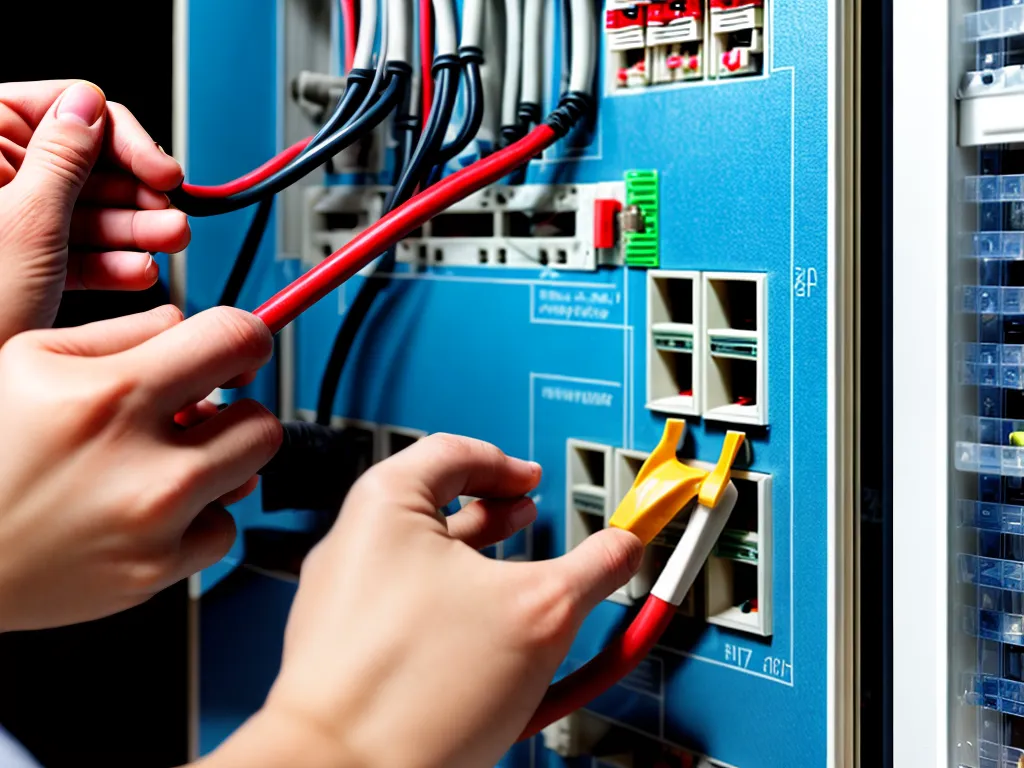
How to Clean and Maintain Electrical Panel Interiors for Improved Safety
Introduction
Maintaining a clean and organized electrical panel is crucial for safety and functionality. An electrical panel with a lot of dust, debris, and unmanaged wires can lead to overheating, arcing faults, and potential fires. By regularly inspecting and cleaning your electrical panel, you can prevent hazardous conditions and ensure it operates reliably for years to come. In this comprehensive guide, I'll walk you through the steps to properly clean and maintain your electrical panel interior.
Safety Precautions
Before doing any work on your electrical panel, it's absolutely vital that you take the proper safety precautions. Here are the key steps you should take:
Turn off the main breaker
This will disconnect power from the panel and prevent shock hazards. Verify power is off by testing with a multimeter or voltage tester.
Wear insulated gloves and other PPE
Wear thick rubber insulated gloves rated for the panel voltage, safety goggles, and other protective equipment to prevent injury in case of accidental contact with live parts.
Use insulated tools
Only use tools specifically rated for electrical work, with insulated handles, to avoid shorts. Never use metal tools which could contact live bus bars or lugs.
Work one hand at a time
Keep one hand in your pocket when working to prevent current flowing across your chest if accidentally shocked.
Double check circuits are deenergized
Carefully verify all breakers are off with a multimeter prior to touching any wiring.
Cleaning the Interior
With safety preautions in place, you can now start cleaning the inside of the electrical panel. Here are the recommended steps:
Remove cover and doors
Take off the deadfront panel cover and open up any hinged doors to access the full interior.
Remove all debris and dust
Use compressed air to thoroughly blow out all dust bunnies, dirt, and debris from the bottom, sides, bus bars, and other surfaces. Vacuum areas the air can't reach.
Wipe surfaces clean
Use a clean lint-free rag dampened with electrical contact cleaner or isopropyl alcohol to wipe down any dirty surfaces. Take care not to spill liquids.
Clean breaker terminals and lugs
Use an old toothbrush and cleaner to scrub corroded breaker terminals and wire lugs. Improve contact and prevent resistance.
Check for moisture
Inspect for any signs of moisture intrusion like rust or mildew. Try to identify and mitigate any leaks.
Managing the Wires
Proper wire management ensures safety, makes future work easier, and improves air circulation. Here's how to tidy up the wires:
Group wires by circuit
Neatly bundle and tie off wires from each individual circuit using zip ties or lacing cord.
Arrange wires cleanly
Route and position wire bundles to minimize crossing and tangling. Arrange toward sides or bottom for easiest access.
Secure loose wires
Use zip ties mounted to the panel back or sides to neatly anchor any loose wires out of the way.
Label everything
Label all circuits at terminals so they can be easily identified for future work. Use tape or labels printed for durability.
Trim wires
Carefully cut back any particularly long or excessive wires so they don't impede access or dangle. Avoid nicking insulation.
Additional Maintenance Tips
Here are some other good practices to keep your electrical panel in top shape:
-
Annually tighten all breaker and lug connections to proper torque specs to prevent loose wires from overheating.
-
Periodically check for any damaged breakers or frayed/melted wires and replace immediately.
-
Inspect for signs of excess heat like discolored terminals and address any issues found.
-
For outdoor panels, seal any holes, gaps, or open knockouts to keep out moisture and insects.
-
Consider adding supplemental surge protection to protect equipment from electrical spikes.
When to Call an Electrician
If you see signs of arcing, burn marks, breakers frequently tripping, or other major issues, it likely requires professional electrical repairs. Any complex panel upgrades should also be handled by a licensed electrician. Routine interior cleaning can easily be a DIY project with proper safety!
Proper cleaning and maintenance extends the life of your electrical panel and keeps your home's electrical system performing safely. Follow these guidelines and inspect your panel at least annually. Taking a little time for preventative maintenance can prevent expensive issues down the road.